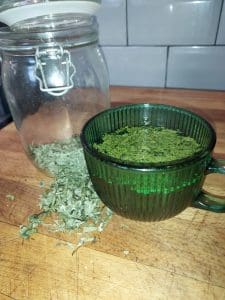In this article, we’re diving into the world of foraging for free Tea & Coffee Ingredients. It’s not just a savvy move to combat the cost of living, but these wild brews, from forager tea to herbal teas, offer delightful tastes and health benefits.
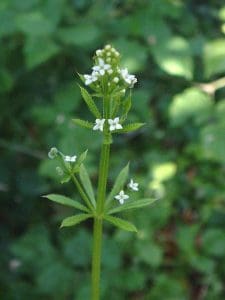
With the ever-increasing cost of living, it’s not uncommon to feel hopelessly lost about it all. The UK recorded, that from November 2021 to November 2023, the price of food and non-alcoholic beverages grew around 27%. Over the ten years before this, there was only a 9% rise in the cost. It can feel like you have no option because you need to eat, right?
There’s a forgotten world of foraging that can save you money without having to revert to hunter-gatherer times. Integrating forager tea and wild tea into your diet is a simple swap that could significantly reduce your food bill in 2024. Teas and coffees, common items in weekly food shops, can add up, but with a little time, you can try these cost-of-living swaps at home.
Green Teas
Green tea, known for its holistic health and green tea benefits, is one of the easiest teas to replicate with foraged ingredients. There’s plenty of foliage to steep all year round that offers a variety of green, earthy flavours, not to mention the herbal tea benefits and healing properties it provides.
One substitute for green tea is stinging nettle tea, with its grassy, earthy flavour, is packed with antioxidants and anti-inflammatory properties, mirroring the health benefits of green tea. Nettles improve blood pressure and cholesterol and support bone health, making them a powerful herbal tea with significant healing benefits.
Collect the tops of Stinging Nettles, abundant all year round but best harvested before they flower to maximize the health benefits of their compounds. To avoid the stinging hairs, wear gloves. For fresh use, steep about 1 cup of nettles in 2 cups of boiling water, then strain for a potent nettle tea. For dry use, dehydrate and crumble the leaves for a loose-leaf tea that stores well and offers a concentrated dose of herbal tea benefits.
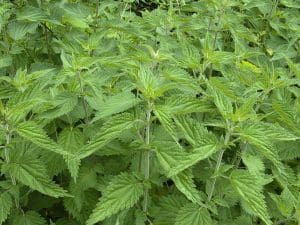
Another green tea alternative is cleaver tea.
Cleavers, stickyweed or goosegrass are packed with natural health benefits, acting as an anti-inflammatory and enhancing the lymphatic system’s function to flush out toxins. They’re especially beneficial for congestion, swelling, and urinary tract infections, thriving in hedgerows, woodlands, and urban areas.
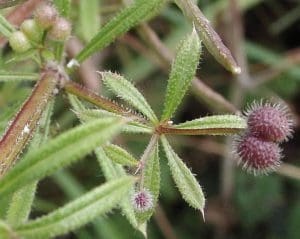
To harness the health benefits of cleavers, look for their velcro-like leaves clinging to fences and bushes in early spring. Use the top fresh leaves for the best flavor and health benefits, steeping them in boiling water for a healing tea that’s rich in herbal benefits.
Black Teas
Earl Grey is another commonly bought tea. It is a black tea but has hints of fruitiness.
Raspberry leaf tea is a fantastic alternative to Earl Grey for those seeking a fruity black tea. Springtime is ideal for foraging fresh raspberry leaves, which can be found growing wild along forest edges and country roadsides. This best raspberry leaf tea offers unique benefits, making it a top choice for tea enthusiasts.
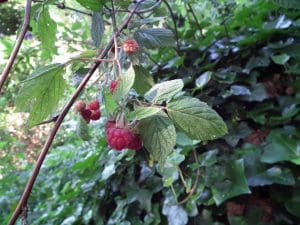
Raspberry bushes, with their distinctive red, stubble-like thorns and delicate white blossoms, are a sight to behold. For those interested in the best raspberry leaf tea, the young, tender leaves harvested in the morning offer peak flavour and potency. To enjoy the raspberry leaf tea benefits, simply gather a handful of fresh (or dried, if out of season) raspberry leaves and steep them in hot water for 5-10 minutes. After straining the leaves, pour the aromatic red raspberry tea into a mug and savour.
Rosebay willow herb or fireweed, with its tall, spiky stems and vibrant magenta-pink flowers, is a wildflower known for creating a flavourful floral black tea, embodying the essence of wildflower teas. Found in disturbed areas and meadows during the summer, the best time for harvesting its young leaves and flowers is at the peak of the flowering season, ensuring a tea that’s rich in herbal tea benefits and healing properties.
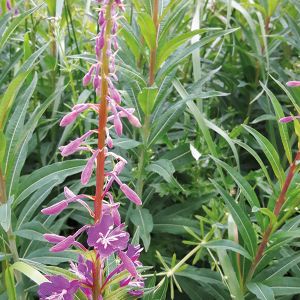 After collecting, wash and air dry the harvested material in a cool, shaded area. Wilt the leaves, then rub them between your palms to oxidize, breaking down the cells. This preparation, integral to creating wildflower teas, enhances the herbal tea benefits. Roll the leaves into a ball shape and cover with a tea towel in a jar for 2-3 days. Once browned, dry them at a low temperature. Steep these in hot water for 5-10 minutes to unlock their delicate, slightly floral taste, showcasing the herbal teas and their benefits.
After collecting, wash and air dry the harvested material in a cool, shaded area. Wilt the leaves, then rub them between your palms to oxidize, breaking down the cells. This preparation, integral to creating wildflower teas, enhances the herbal tea benefits. Roll the leaves into a ball shape and cover with a tea towel in a jar for 2-3 days. Once browned, dry them at a low temperature. Steep these in hot water for 5-10 minutes to unlock their delicate, slightly floral taste, showcasing the herbal teas and their benefits.
Coffees
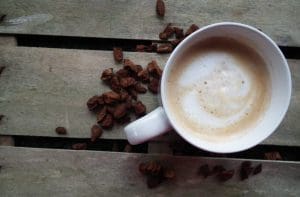
Coffee, a staple in the weekly shop, boasts benefits like improved energy levels, brain health, and gut health support. While dandelion root and Cleaver seed burs offer a unique swap, they bring their own set of advantages to the table.
While dandelions are often dismissed as pesky weeds, dandelion roots conceal a secret treasure of health benefits, making them a notable mention among herbal tea benefits. Dandelion Root Coffee, a caffeine-free alternative, offers a rich earthy taste along with detoxifying properties and inflammation reduction. Similar to coffee, it supports gut health with its prebiotic properties, best harvested in late autumn or early spring.
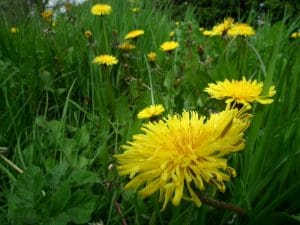
Scouting for dandelions in open fields, meadows, or gardens can lead to discovering the base for a unique forager tea. After securing permission, wash and dry the roots at a low temperature before roasting them until dark and aromatic. Grind the roasted roots for a wild tea experience that’s both traditional and innovative.
Cleavers, with their slender, climbing stems and tiny hooked hairs, produce small, greenish-white flowers in late spring to early summer, leading to distinctive burrs that encase tiny seeds. These seeds, once harvested and prepared, offer an unexpected treat.

Cleaver burr seeds yield a coffee with a subtle earthy and nutty flavour, marking another unique entry in the world of forager tea and wild tea. After harvesting mature cleaver burrs, clean and roast the seeds until they darken, then grind them for a coarse consistency. Choose your brewing method and enjoy a cup of this earthy delight.
In conclusion, as the cost of living climbs, foraging for your teas and coffees can be a savvy way to save. Keep an eye out for these simple foraged items, a practice that not only benefits your wallet but also introduces you to the rich world of forager tea, wild tea, and the herbal teas and their benefits.



